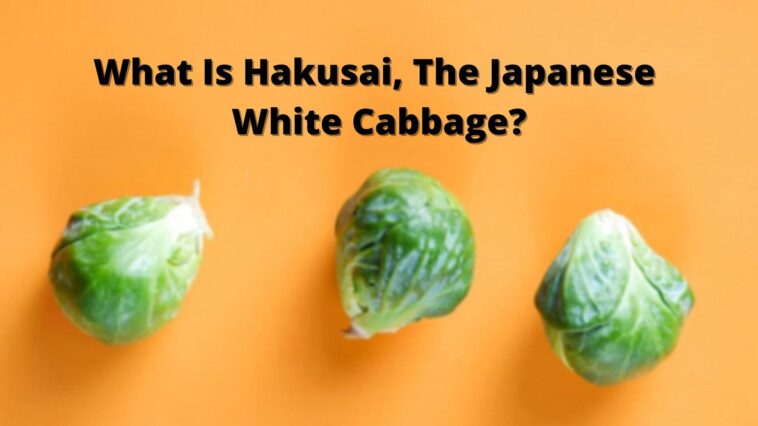Wondering what is Hakusai and why is it so popular in Japan? Read further to know more about Chinese cabbage, Hakusai, and also some quick Hakusai recipes to satiate your healthy cravings!
The Japanese have healthy food habits, something that the Western world is trying to adapt to, to keep away obesity, stay fit and build their immunity. The food in Japan is also absolutely delicious. A very popular dish you will come across is the Napa cabbage.
What is Hakusai?
Hakusai (literally 白菜 , white cabbage), also known as Napa cabbage, belongs to Chinese cabbage family. It is very leafy and is very similar to cabbage and contains an abundance of nutrients like vitamin C, A and K, carotene, folates etc. It is in the heart of the Japanese people during the winter season. It is also extremely cheap and can be converted into quick and yummy recipes.

Related: Try this healthy veggie, Okinawa’s superfood Goya to stay fit!
During the colder winter months, you might come across the Japanese cabbage sold in plenty in your local supermarket. You might also find a lot of Japanese loading up their shopping carts with this household favourite.
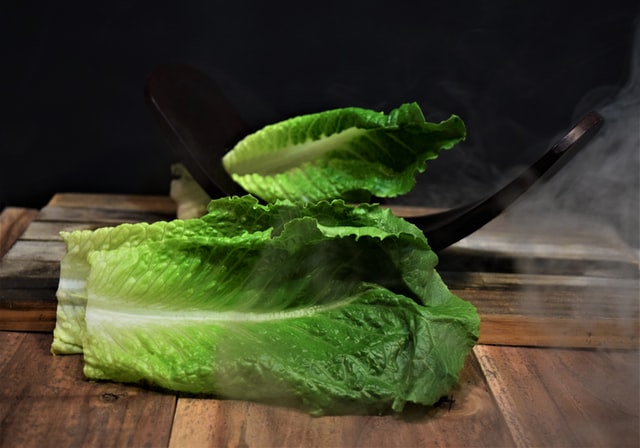
If you’re trying to figure out What this white cabbage is, you’re on the right page. Keep reading for all the info you could possibly need.
Related: Check out the art of Obento, the Japanese boxed lunch that is not just healthy but also pretty!
Page Contents
What is Hakusai?
White Cabbage: Hakusai
Hakusai (translates to White cabbage), also called the Napa Cabbage or Chinese Cabbage is the miracle vegetable that is grown across Korea, Japan and China.
It is a versatile leafy vegetable that is mainly grown during the colder months, yeah that’s what is hakusai.
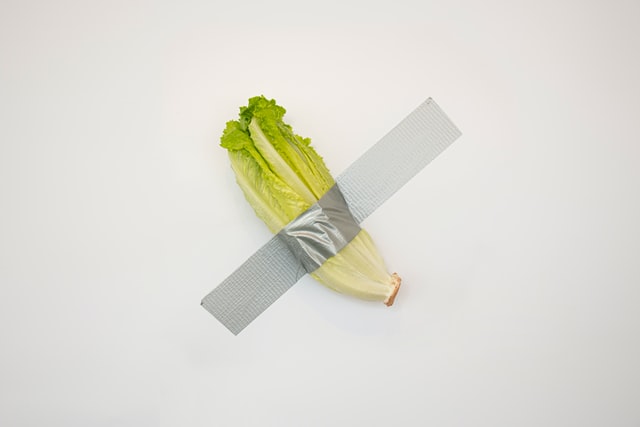
What is hakusai by its structuree? The layers are tightly packed, resembling lettuce, and the vegetable feels spongy, yet quite solid. Easy to grow in abundance, a very tough vegetable that can weather the cold, this cabbage is also easy on the wallet.
Related: Try these easy Japanese for food ordering words when you want to order food in Japan!
What is hakusai used in? It is used in soups, salads and rice dishes, and eaten commonly with meats like pork, fish, crab, chicken and shrimp. It goes well paired with carbs like noodles and rice and is used in stews as well.
A much-relished dish in Japan is a kind of napa cabbage wrap, where meat cooked with spices is wrapped inside the vegetable’s leaves. Having grown up eating the Hakusai, this is one of those comfort foods that bring a lot of nostalgia to the Japanese.
Related: Wanna stay fit and fine? Read rules of eating healthy in Japan and you’ll know the secret!
Why is Hakusai in Demand
This vegetable is one of those foods that are low calorie, yet pack a whole lot of nutrition into every bite. It’s like getting your day’s worth of vitamins and minerals in a delicious and enjoyable dish.
The Hakusai is part of the same family as kale, broccoli, cabbage and Brussel sprouts. As with the rest of the family, about 100 grams of Hakusai contains only 16 calories.
Related: Sip the Awamori Island Sake, the oldest alcoholic beverage, read more about it here!
This is widely used in many dishes across the East Asian countries as these leaves are crisp, have a mild sweetish flavour and render a beautiful crunch to salads, soups and stir fries. It is also about 96% water, helping you stay hydrated.
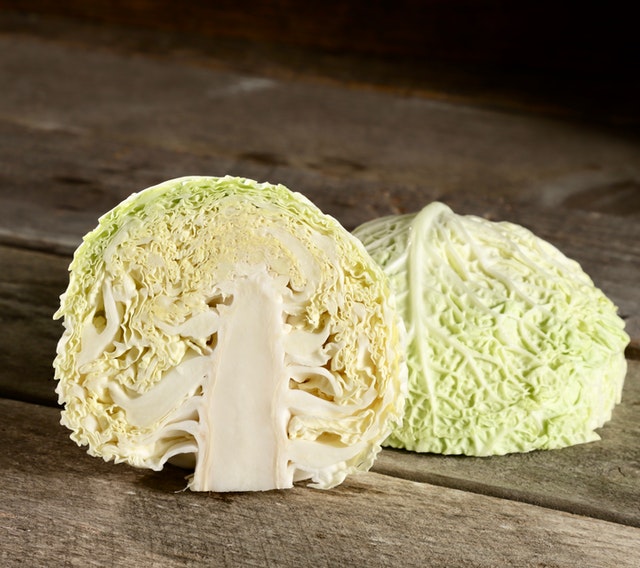
What is Hakusai Packed with? The cabbage comes loaded with antioxidants. If you don’t already know, antioxidants are what are required to fight off free radical damage. Free radical damage is caused by exposure to the sun, pollution and other environmental stressors.
They cause you to age quicker, lower your immunity and can also trigger certain diseases like cancer. So eating foods rich in antioxidants is always a good idea if you want to look and feel youthful.
It also contains a lot of vitamins, some of the most notable ones being Vitamins C, A, K and folates. These vitamins are important in keeping you healthy, your eyes sharp, your brain active and your skin and hair lustrous and glowing.
Related: Check out what’s better between Soba vs Ramen to enjoy it on cold evenings or mornings!
They maintain bone health, preventing osteoporosis, and can prevent diseases related to ageing, like Alzheimer’s. This is what is hakusai, a disease killer!
What is hakusai containing in it? It contains a lot of minerals as well, like good amounts of iron, calcium, potassium, manganese, magnesium and phosphorus.
Finally, it has a lot of dietary fibre. Fibre is key to keeping your system functioning well and eases constipation.
Related: Top Conveyor Belt Sushi Restaurants to visit in Tokyo for appetizing Japanese sushi!
Hakusai Dishes Are A Popular Choice During The Winter
Don’t be surprised if you see Chinese cabbage at the dining table of a Japanese home three or four times a week! What is hakusai, if not winter’s best thing!
It is one of the toughest vegetables you will find. Winter is a time when you want to be limiting your grocery shopping as far as possible. Napa cabbage can handle any amount of cold, snow or frost, staying fresh and crisp.
In fact, the best part is that, as the vegetable ages, it gets tastier with the leaves developing a sweeter flavour.
Related: Check out these Japanese convenience store foods you have to try for yummy snacks!
What is hakusai’s cooking procedure? Hakusai is also incredibly easy to cook, needing very little prep. Just make sure you wash the leaves well as these days it is quite common for farmers to use insecticides to keep pests from ruining the crops.
Soaking the leaves for a few minutes in water and giving them a good rinse should do the trick.
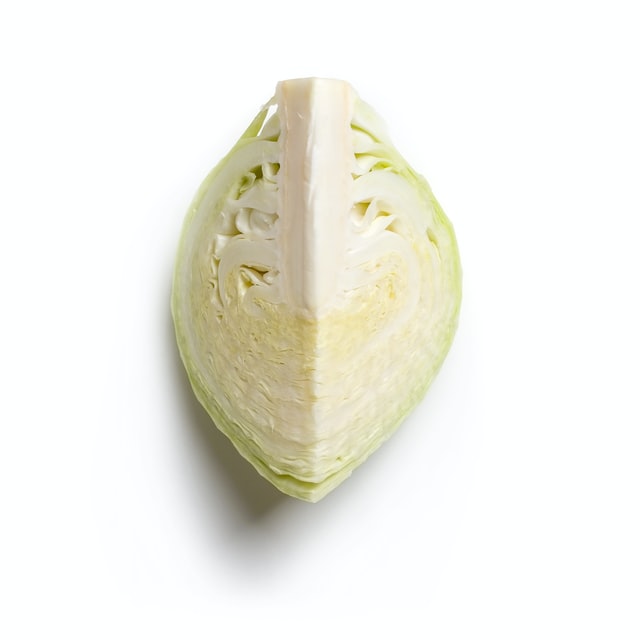
Hakusai keeps the body well hydrated, which is required during the winter as water consumption is lower when compared to the hotter season.
It also keeps colds at bay, acting as a decongestant. As I said before, Hakusai is also very cheap.
This is quite an important factor as usual, during the winter, most regularly consumed vegetables cost more than they cost during the spring and summer.
Related: Do you know why fruits in Japan are so expensive? Check it out now, you’ll be astounded!
Hakusai is Affordable
Honestly, if you’re asking what is hakusai’s price, then let me tell you it’s dirt cheap. It is one of the most affordable vegetables in Japan. You can literally eat it for 3 meals all the time in winter season and still not be bothered to think what is hakusai’s price.
Health Benefits of Eating Hakusai
Hakusai, also known as Napa cabbage or Chinese cabbage, is a nutritious vegetable that offers several health benefits when included in your diet. Here are some of the health benefits of eating Hakusai.
Hakusai Is Nutrient-rich
Hakusai is low in calories but high in essential nutrients such as vitamin C, vitamin K, vitamin A, potassium, and folate. These nutrients play important roles in supporting overall health and well-being.
Hakusai Has Antioxidant Properties
Hakusai contains antioxidants such as beta-carotene and vitamin C, which help protect the body against damage from harmful free radicals. Antioxidants can contribute to reducing the risk of chronic diseases like heart disease, certain cancers, and age-related macular degeneration.
Hakusai Supports Digestive Health
Hakusai is a good source of dietary fiber, which aids in digestion and promotes bowel regularity. Including Hakusai in your diet can help prevent constipation and maintain a healthy digestive system.
Hakusai Helps With Hydration
With a high water content, Hakusai can help keep you hydrated. Staying hydrated is important for various bodily functions, including maintaining healthy skin, regulating body temperature, and supporting the cardiovascular system.
Hakusai Is High In Fibre And Low In Calories
Due to its low calorie and high fiber content, Hakusai can be a valuable addition to a weight management plan. The fiber in Hakusai helps create a feeling of fullness, which can aid in controlling appetite and preventing overeating.
Hakusai Promotes Heart Health
The potassium content in Hakusai contributes to heart health by supporting healthy blood pressure levels. Including potassium-rich foods like Hakusai in your diet can help reduce the risk of hypertension and cardiovascular diseases.
Hakusia Is Good For Your Eye Health
Hakusai contains vitamin A, which is essential for maintaining good vision and eye health. Vitamin A is particularly important for night vision and helps protect the eyes from age-related macular degeneration and cataracts.
How to Choose Hakusai
What is Hakuai’s quality if you wanna buy it? Choose a hakusai that looks fresh and feels heavy. Some hakusai may have a few black dots on them and this is normal. You might be able to scratch them off and they will go away once they are washed well.
Hakusai Recipes: Yum!
Hakusai has a very neutral taste and is therefore one of those vegetables that can be added to any flavour. This is why hakusai is a staple in many Japanese households. Even if they have a hakusai dish four times a week, it is far from boring.
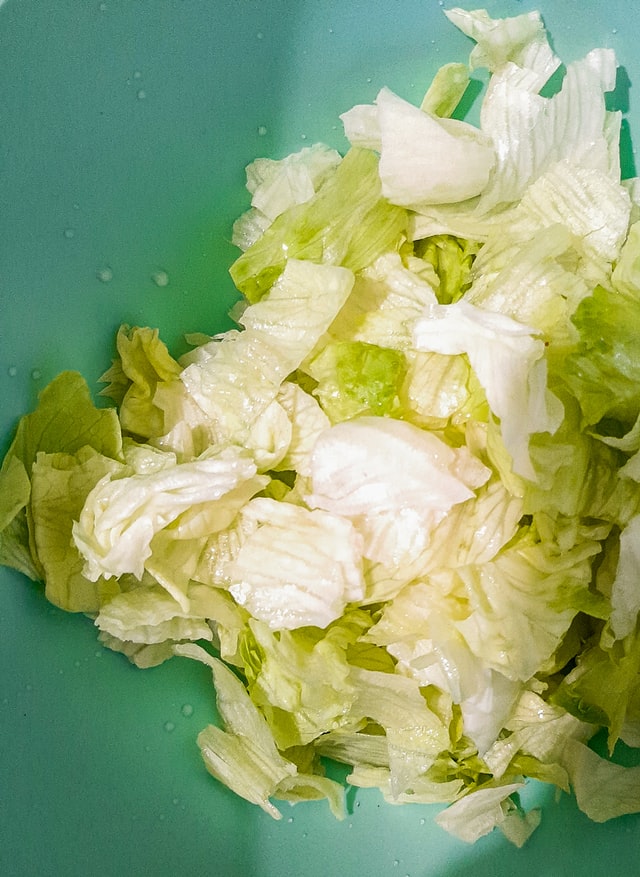
These days there are lots of hakusai flavoured snacks in the market that you will see lots of Japanese youngsters munching on. There are also hakusai flavoured instant soups and soup cubes that can be used to add flavour to any noodle or rice dish.
Related: Try the Osechi Ryori New Year Japanese cuisine, you’ll love how significant it is!
During the winter, every restaurant in Japan will have lots of hakusai dishes on their menu. But it’s also fairly easy preparing a hakusai based dish at home.
Let’s check out some Japanese Hakusai Recipes:
Eat Hakusai Raw By Adding To Your Salad
What is a hakusai recipe that’s my favourite? Well, I know it’s not a recipe but this is my personal favourite way to eat it. Hakusai leaves can be eaten raw. Wash thoroughly and let the water drain.
Tear up the leaves and add them to your salad. You can also use these the way western dishes use lettuce cups or lettuce leaves as the bed for cooked meats.
Make a nutritious and colourful salad with ripe beets, crunchy carrots, juicy peppers, some radish and torn up hakusai leaves. Make a simple dressing out of soy, chilli and a pinch of sugar, and enjoy.
Related: Do you know why Japanese eat raw fish and love it? Check out here!
If you want to use hakusai in a hot or cooked dish, make sure you don’t cook it too much. The leaves lose their crunch and become soggy if overcooked.

Below are some tips if you’re cooking the hakusai:
Hakusai Wraps Recipe
What is hakusai’s top recipe? The Wraps! Cut the hakusai, leaving only the hard centre portion behind. Take a pot of water and salt it generously.
Place it on the stove and bring it to a boil. Add the cut hakusai to this water and let it boil for about 5 to 6 minutes. You will see the leaves softening. Once they soften, remove the leaves from the water and let them cool a bit.
Related: Check out this Japanese cookbook and make a delicious Ramen at home!
You will be able to separate the leaves now easily. These leaves can be used to make wraps where you can place cooked meats, vegetables, mushrooms, etc mixed with your favourite spices and sauces.
You can also chop these leaves up and add them to stews. This is a healthy hakusai recipe.
Hakusai Stir Dry Recipe
What is hakusai’s easiest recipe? Stir-fryyyyy! If you love stir fries, add hakusai last into the pan, after the harder vegetables have been fried enough. Once the hakusai is added, gently toss it around for just 2 to 3 minutes and turn off the heat.
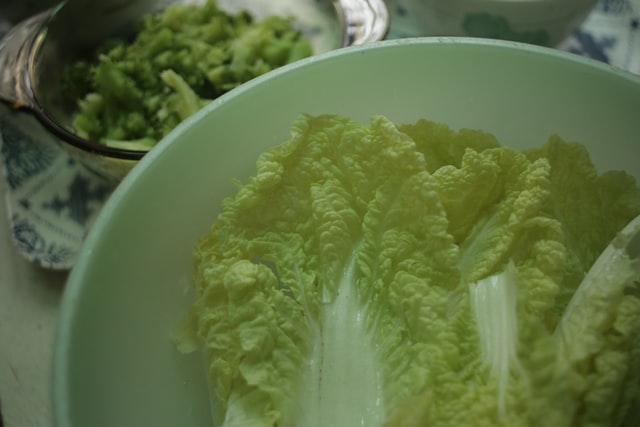
This softens the leaves just enough but also retains the crunch that we love in a stir fry. Hakusai, being a neutral flavoured vegetable, is perfect with sweet, tangy and spicy sauces.
When I don’t have many vegetables at home and need something in a jiffy, I love a plain hakusai stir fry with some bean sprouts and peanuts for added crunch.
Related: Try out a crash course in the Japanese home and kitchen that will ease your living in Japan!
Steamed Hakusai
You can also steam hakusai in a steamer. This retains the nutrients better than if you were to boil the leaves and discard the water. Steamed hakusai leaves can be added to any dish or simply mixed with sauces and eaten by themselves. They are great for winter colds.
Hakusai Is Also Great Alternative To Cabbage Or Lettuce
Use hakusai in place of cabbage or lettuce in any western or continental dish. I’ve put together a last-minute coleslaw where I replaced the cabbage with hakusai, added shredding carrots and a mayo dressing. Nobody knew any better!
You can also chop up the leaves and add them to your burrito bowls instead of lettuce, or to your tacos.
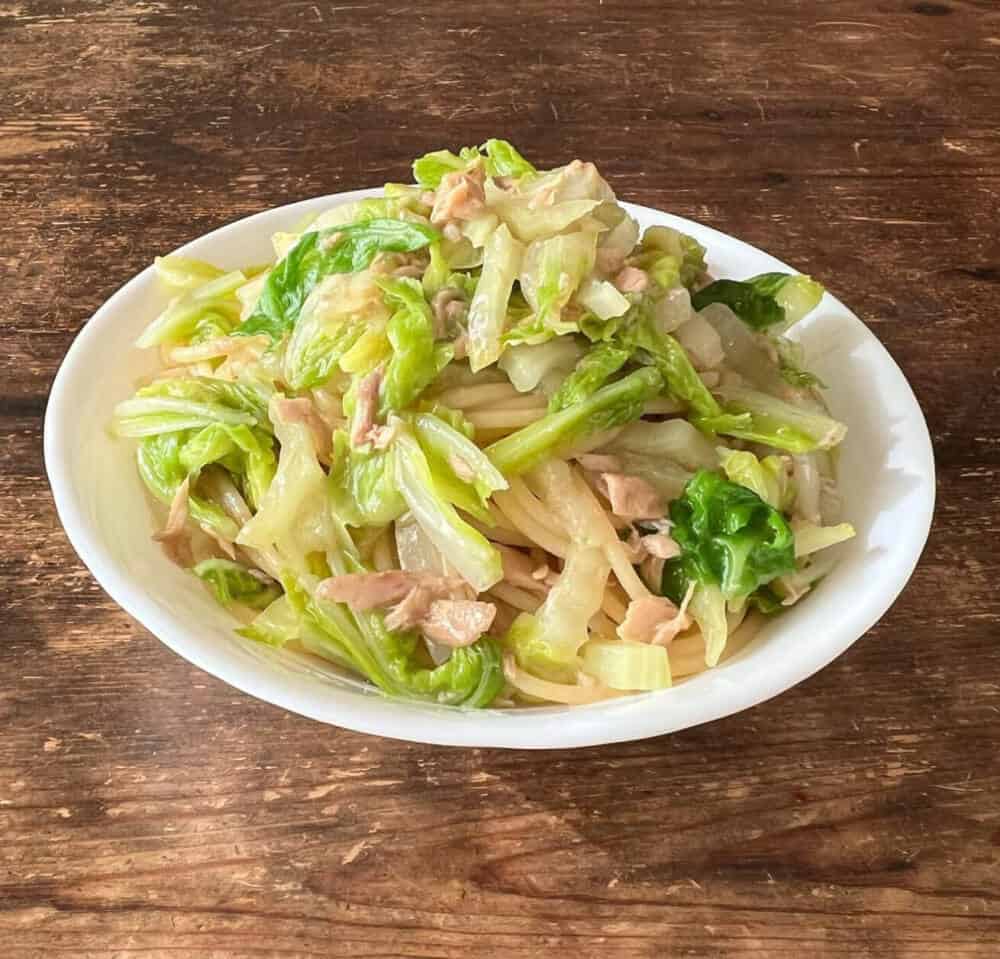
Related: Here’s a beginner’s guide to Japanese Izakaya if you’re going to Japan for the first time!
Hakusai is Love
I get really excited when I think of the various ways in which hakusai can be used.
How about some hakusai leaves in your chicken salad sandwich? Sky’s the limit when you have a few heads of hakusai at home, really!
I hope this article- What is Hakusai, helped you in knowing the veggie a little better!
Also Read:
- Why Are Mangoes So Expensive In Japan?
- Why Are Melons So Expensive in Japan?
- Reasons Why Japan Does Watermelon Better


